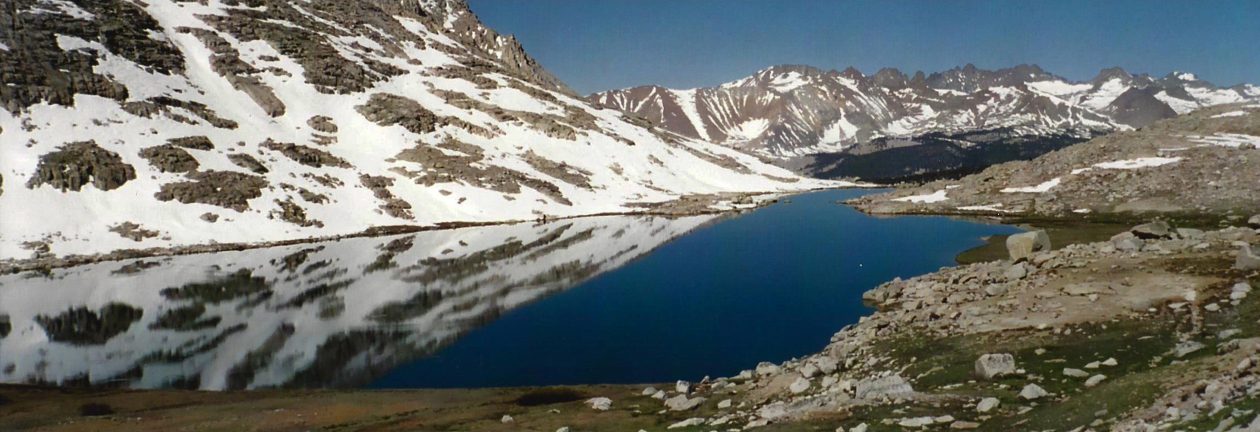Nairobi, Kenya
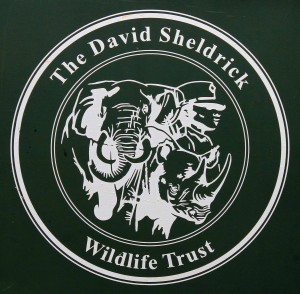
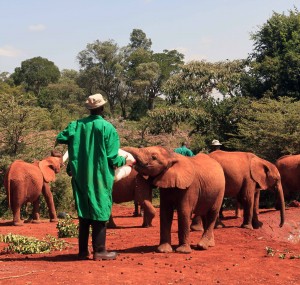
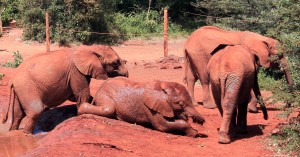
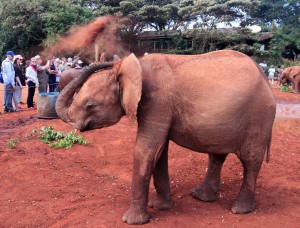
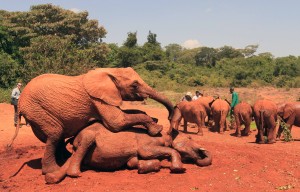
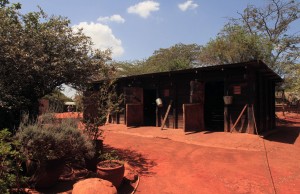
I woke up today at about 08:00, got ready, had breakfast (fried egg, toast, watermelon, coffee) while talking with the New Zealand woman, and then had a taxi pick me up at 10:30. I rode the taxi to the Sheldrick Elephant Orphanage, adjacent to Nairobi National Park, and made it there in time to see the feeding (the feeding occurs from 11:00 to 12:00 and is the only time visitors are allowed unless the visitor has adopted an orphan and made a reservation to visit at 17:00). There was a roped off area with a water hole and the many spectators and I watched the young elephant calves there being fed with large milk bottles (using formula milk) by the handlers; we also watched the elephants play around with each other, splash around in the water hole, and spray themselves with water and/or dirt. While the elephants were being fed and playing, a speaker came out and told us the back-story of each orphan; most lost their parents to poachers and were left to die, others were separated from their family (some fell down wells), and others could no longer be cared for by their mothers (one elephant’s mother was unable to provide food, so the rangers decided to put her down and rescue the calf instead of losing both – tough decision). At 11:30, the young elephant calves were lead away and the older calves (over three years of age were brought out – “the older they get, the cuter they ain’t”) were brought out, many of which would soon be released in the wild to integrate in with other elephant families (they will still be monitored for at least five years to make sure they do integrate). We were also told an interesting story about a former female orphan who came back to the shelter when she was ready to give birth – recognizing that the shelter is a safe place. Just before noon, the show was wrapped up and I walked back to the taxi, which had waited for me.
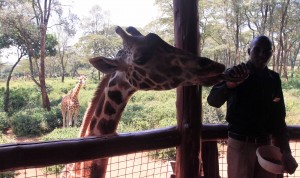
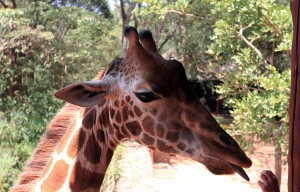
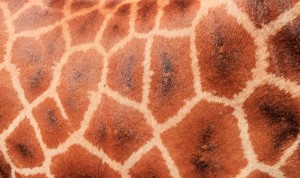
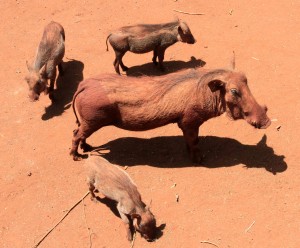
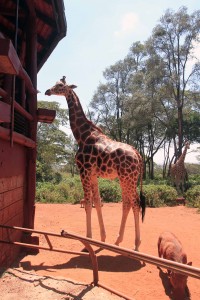
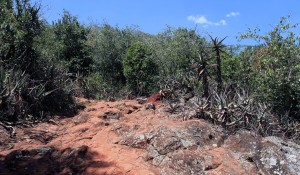
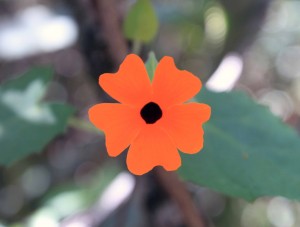
We then drove to the Giraffe Center, next to the Giraffe Manor (the place people can stay for $1,000+ a night and get to eat breakfast with the giraffes, who poke their heads through the windows expecting treats). At the Giraffe Center, I said goodbye to the taxi driver and walked inside; at the eating platform, visitors are given a handful of pellets to feed to the giraffes; I fed a couple of giraffes by hand, having their long tongues slobber all over my feeding hand, and pet them, and I watched a kid put the pellet in his mouth and have the giraffe effectively kiss it from him. After feeding the giraffes, I watched one of the handlers give a short presentation on the giraffes; other than watching or feeding the giraffes or watching the warthogs hanging around, there wasn’t a whole lot to do and it was rather expensive for what it was; I tried to visit the Giraffe Manor, but only guests are allowed in; so I walked around their nature trails for a short period, before trying to walk to the Karen Blixen Museum – this, however, turned out to be a mistake; the whole Karen area, that encompasses the Giraffe Center and the museum, is an affluent neighborhood with many streets coming to a dead-end at someone’s mansion; after trying several streets, heading in a west or northwest direction, I gave up (it’s like a maze here) and walked back to the Giraffe Center, where I took a reasonably priced taxi to the Karen Blixen museum.
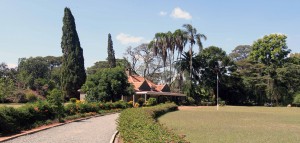
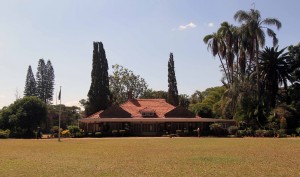
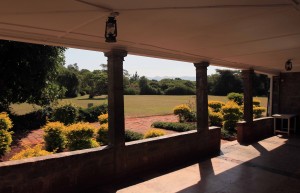
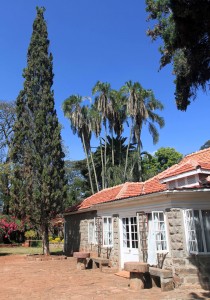
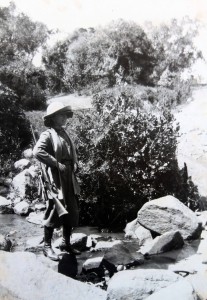
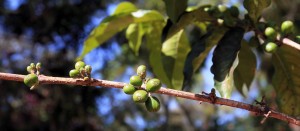
The Karen Blixen Museum is located in the house that she had lived in from 1917 to 1931; it was built in 1912 by Sweedish engineer Åke Sjögren. Karen Blixen moved to Kenya (then British East Africa) with Baron Bror von Blixen-Finecke, her fiance and soon husband, in 1913 and they established a coffee plantation not far from the Ngong Hills; unfortunately, the coffee did not do well at this altitude and soil; later she was separated from her husband in 1921 and divorced in 1925, but continued to live in this home and manage the failing coffee plantation herself; she famously had an affair with Denys Finch Hatton (an ivory hunter), who was killed when his biplane crashed in May 1931, and, also in 1931, when the coffee plantation failed for good, Karen moved back to her native Denmark; there she wrote several novels, one of which was ‘Out of Africa’, which was later made in to the 1985 Best Picture winner of the same name. After paying the entrance fee, I was assigned a guide and was taken around the grounds and each room inside the house; the structure of the house is practically the same as when Karen lived there; however, most of the artifacts inside were supplied by Universal Pictures (e.g. the dining room set was used in the film and the clothes on display were outfits worn by Meryl Streep while making the film); overall, it was a lovely house with a beautiful lawn and I enjoyed my visit to this historic residence.
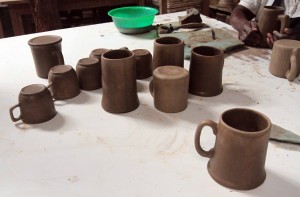
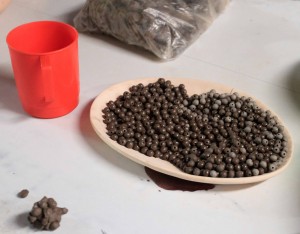
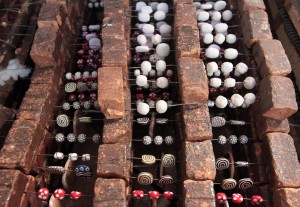
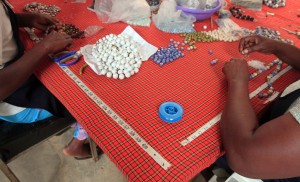
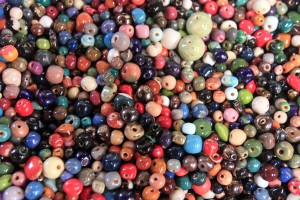
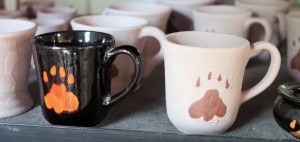
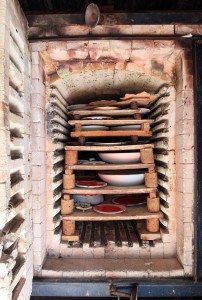
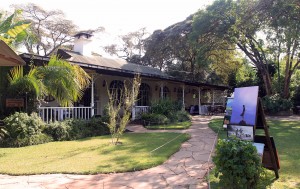
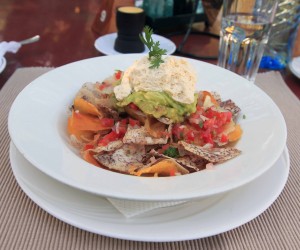
After visiting Karen Blixen’s former home, I walked to the nearby Kazuri bead and pottery factory; this establishment makes handcrafted items using clay and employs single mothers who have no other source of income. I toured the factory with a guide, and was taken through the whole process of making the clay, molding the beads, painting them with enamel, firing them in the electric ovens, and then either leaving them to be sold as is or using them to make necklaces, earrings, or bracelets; I was also shown the process for making the pottery. Afterwards, I visited the gift shop and bought my second souvenir on this trip (the first was bought in Vietnam at an arts and crafts workshop employing older women, most of which had polio or other physically deforming diseases). I then walked through the affluent Karen neighborhood (where many well-to-do Kenyans and expats live), past mansions and even a horse riding school (this is not the infamous part of Nairobi that earned the capital its nickname of “Nai-robbery” and I felt quite safe walking around here) to the Karen Blixen Coffee Garden restaurant to have a late afternoon meal; I had a cup of Kahawa Sawa (coffee with Kenya gold (a liquor) and whipped cream), Kachos (a Kenyan version of nachos), Madagascar green peppercorn duckling with mashed potatoes, and some much needed water. After that excellent meal, I walked north on Karen Road and returned to the lodge I’m staying at. I then talked to the New Zealand woman who is also staying at the lodge; she told me about how her and her husband took a two day safari in Kenya, using a small prop plane to get to and from her campsite by a river, and was fortunate enough to see the “Big Five” and a giraffe giving birth (very, very lucky); if I ever return to Kenya, I will probably do the same, but I will probably do a four or five day safari instead; I do like the idea of flying above Kenya in a small plane, able to see all the animals below, and having to clear the animals off the runway before take off and landing – this sounds much more like an adventure than the safari I did in Tanzania -; I also, like the idea of camping in one spot the whole time instead of wasting so much time driving to different places (oh well, live and learn; to the handful of readers who may stumble upon this page, take note: I think the Tanzania safari was worth it, but I would recommend doing what the New Zealand woman did as well). I later had a dessert (an ice cream sundae with bits of local fruit) and some beer before calling a night and retiring to my room.
